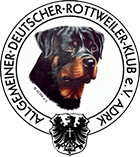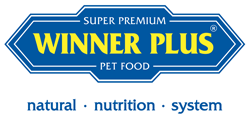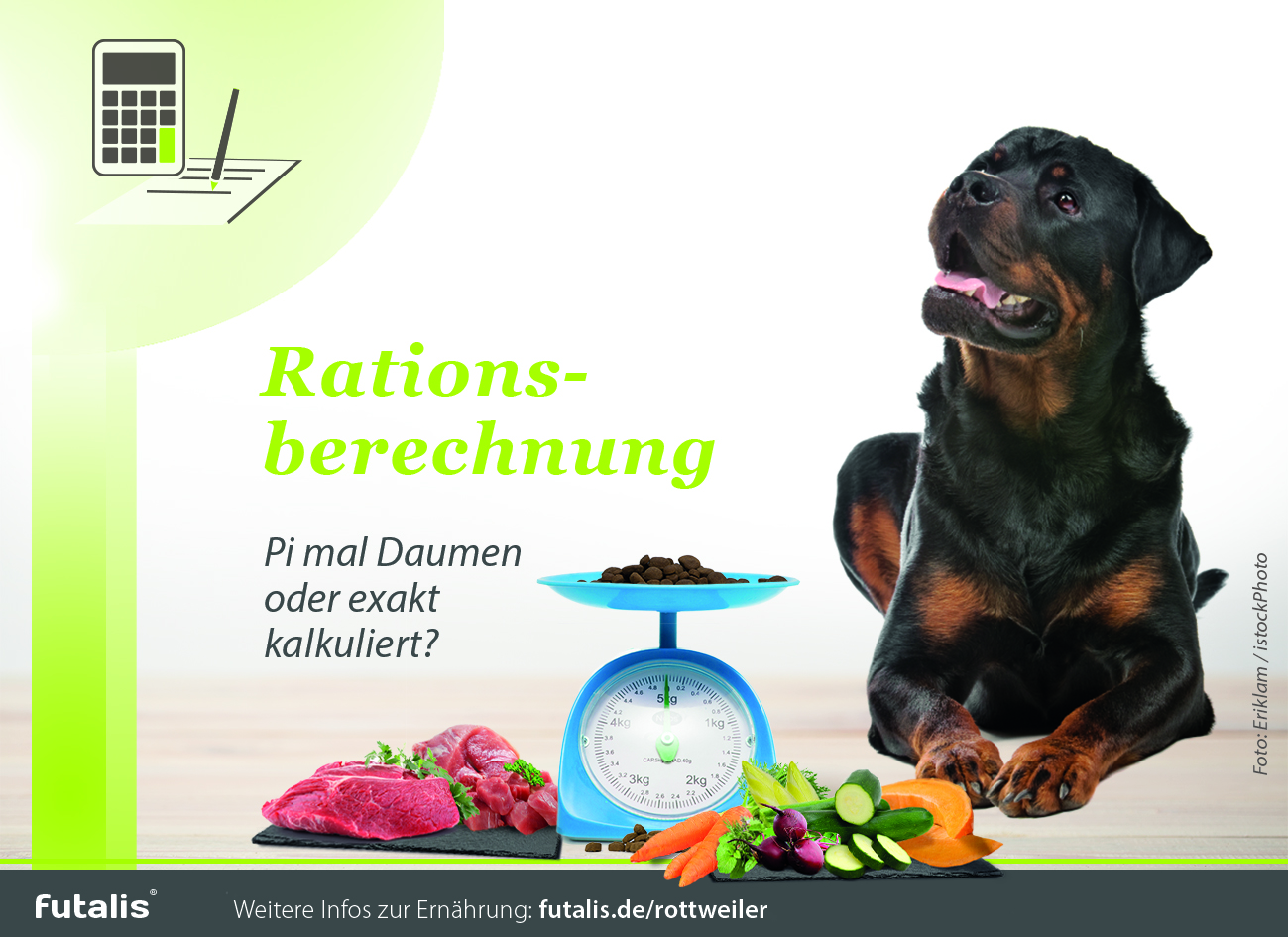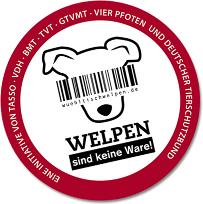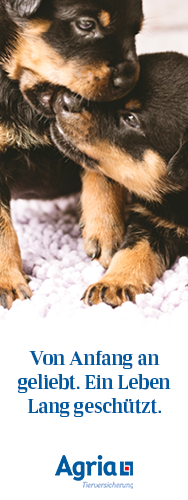| ADRK |
| Allgemeiner Deutscher Rottweiler-Klub e.V. |
Calculating rations for dogs - what's behind it?
The individual nutritional requirements of dogs are a recurring theme. Ration calculation or ration review are always the key words here. But how does this actually work? Who can carry out such an evaluation? And what does this mean for your Rottweiler's diet?
What is needed to calculate a ration?
It actually sounds quite simple: on one side is the dog's diet to be checked (the "actual"), on the other side is what the dog actually needs (the "target"). The purpose of a ration review is to compare the two sides, uncover imbalances and, ideally, balance them out.
Both self-prepared fresh rations and ready-made feed can be tested. The difficulty initially lies in knowing the factors influencing individual requirements and applying them correctly. They are essential for ration testing. Creating a balanced ration based on the ration calculation is also very complex and requires some experience in dealing with the requirement values and the possible feed ingredients.
The essential nutrients
As the name suggests, food is used to supply nutrients. Some of them are used to generate energy, others as "building blocks" for the body's substance. The body can produce certain nutrients itself, for which it has "no need". However, most nutrients must be supplied with food because the body cannot produce them itself. These include minerals (calcium, phosphorus, sodium, potassium and magnesium) including trace elements (e.g. iron, copper and zinc) and some vitamins. There are also essential fatty acids and amino acids. Which nutrient is required in which quantity depends on the animal species, but also on individual characteristics such as age or weight. On the one hand, the differences are due to different "consumption" of the nutrients: young animals, for example, need significantly more calcium than adult animals, as they have to build up solid bone substance.
On the other hand, there are also evolutionary differences: Essential nutrients that only occur in very small quantities in the natural environment and food are particularly effectively utilized and absorbed from the intestine and therefore only need to be supplied in small quantities. Vitamin C, for example, is an essential vitamin for humans. Dogs, on the other hand, can produce this vitamin themselves and do not need to be supplied through their diet. The calcium requirement of dogs is comparatively much higher than that of humans, especially in young animals. Scientific studies have determined the exact requirements of dogs for each nutrient, and the influencing factors are now also fairly well known from such studies.
Nutritionally relevant properties of the dog
Not all dogs are the same and every dog has its own feeding requirements. The most important criterion is the dog's body weight. This is used to calculate the basic requirement of each individual nutrient. Other characteristics serve as factors that can increase or decrease the basic requirement. The breed of the dog has an influence on the energy requirement. However, certain susceptibilities to disease in some breeds can also influence the recommended intake of individual nutrients. Activity is also very important, as it is a significant factor in energy requirements. More active dogs need more energy than slower dogs. Nutritional status is also an essential factor: overweight dogs must be given significantly less energy than normal-weight dogs in order for them to regain their ideal weight. The reverse is true for underweight dogs. Growing puppies and young dogs generally have an increased need for energy and nutrients.
However, estimating this is much more complex than in adult dogs, as it changes during the course of growth. The same applies to pregnant or nursing bitches. The number of puppies to be fed and the week of lactation or the age of the puppies also play a role here. Last but not least, illnesses can also lead to changes in a dog's nutritional requirements. In the case of kidney disease, for example, a reduced intake of phosphorus and protein is recommended. It becomes particularly complex when several diseases occur at the same time. There is therefore no single nutrient requirement for a dog; it must be determined individually for each dog and for each nutrient.
How the nutritional requirements are covered by the diet
First and foremost, feed serves as a source of energy. The individually determined energy requirement therefore largely determines the amount of feed required. The energy content of the feed can be calculated using a formula based on the proteins, fats and carbohydrates it contains. All three energy suppliers should be included in a balanced feed ration. The optimum content in the feed does not follow any strict requirement standards. There is a requirement for essential fatty acids and amino acids, which must be covered by the fats and proteins supplied. However, this can generally be achieved with relatively small amounts of fat or protein sources, provided these are of high quality (e.g. linseed oil or muscle meat). As these quantities are usually not sufficient to provide energy, carbohydrates or additional proteins and fats are also supplied. Their optimal content in the food should be seen as a supply recommendation and depends, among other things, on the individual tolerance in the dog's intestine. Once the daily amount of food to cover energy requirements has been determined, it is also checked whether it contains all the essential nutrients. As mentioned above, this includes the essential fatty and amino acids, but also minerals and vitamins. Under-supply should be avoided just as much as over-supply.
Fresh feed rations are often made up of meat and other animal products as well as plant-based ingredients to cover requirements and are balanced with vitamin and mineral powders. The quantities of ingredients can be adjusted individually. With ready-made food, it is important to choose the right variety to suit the dog's characteristics. However, it is often the case that ready-made food does not take all of a dog's characteristics into account at the same time. Choosing the right food can therefore be challenging.
Ration review and ration preparation
The ration calculation normally consists of a review of the previous feed ration and - if imbalances are identified - the creation of a new feed ration. Although the review is only a simple calculation using the feed composition and the previously determined requirement values of a dog, it is nevertheless very time-consuming because it has to be carried out individually for each nutrient. Specially programmed software can be very helpful for this purpose. Such programs already exist on the market and are mostly used by veterinarians who specialize in dog nutrition.
Creating a balanced food ration, on the other hand, is extremely complex, as the natural food ingredients that can be used always contain several nutrients at the same time. In addition, the composition of the food is of course not just a calculation of nutrients, but other circumstances such as the dog's taste preferences or the owner's preparation options must also be taken into account. Creating a balanced food ration therefore requires some experience and is very time-consuming. This is why a nutritional consultation with a nutritional specialist has its price - 50 to 100 euros is the norm, and the costs can be higher for more complex issues.
Is it worth the effort?
Some people wonder whether it really has to be so complicated, whether you can't just feed your dog by feel. Certainly, this was a common feeding practice for a long time and did not make all dogs ill. Nevertheless, scientific findings should be used if they are beneficial to health. After all, the late effects of nutritional errors are only visible when they can no longer be reversed. Every dog is unique and not every dog is equally susceptible to nutrition-related illnesses. That's why a needs-based diet is just as much a part of good dog care as sufficient exercise or regular visits to the vet. Your dog's health is definitely worth the investment.
